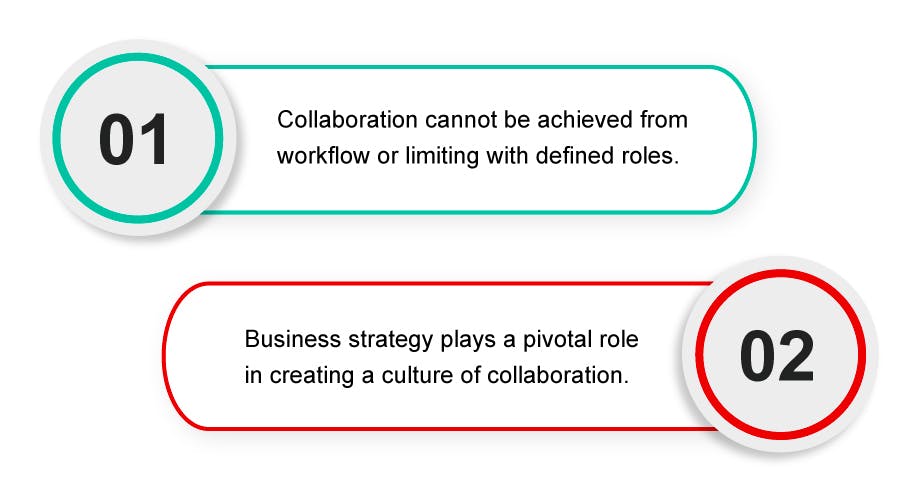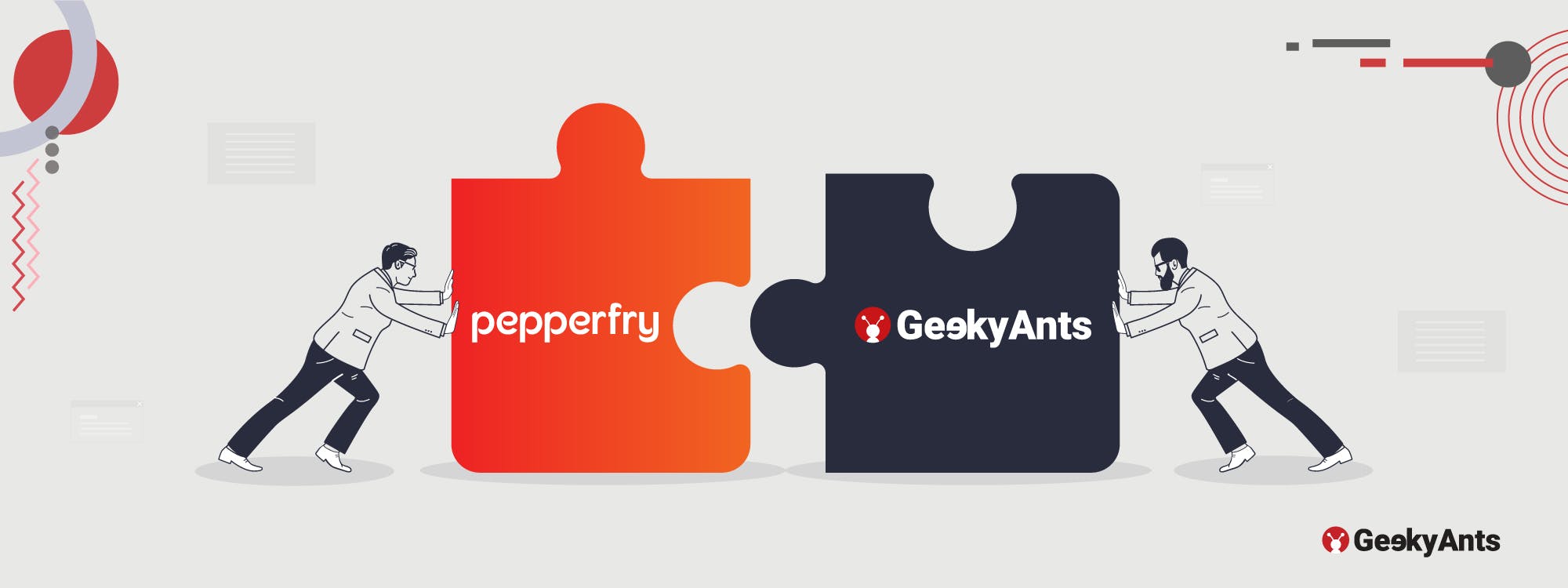Table of Contents
The Dynamics of Collaboration for Organizational Excellence
Author

Date

Book a call
Collaboration is not an activity but a culture for sustainable growth.
What's the first thought in your mind when we talk about collaboration?
- Collaboration among team members
- Collaboration within department
As skillsets get more specialized and business demand increases in time sensitivity, collaboration is getting more significant. It is not merely a corporate buzzword but an accurate antique tool to grow together.
Let's talk about the definition of collaboration.
How to define Collaboration?
Collaboration is when a group of people with particular core expertise work together for a common objective, mission, and success. In the software service domain, collaboration happens at different stages. The marketing team works with a diverse group with specific expertise to create the marketing materials. The sales and marketing teams ensure the correct flow of leads to increase the client portfolio. Sales, legal, technical, and account managers collaborate during the sales funnel. Each individual puts their expertise to work on one mission to achieve excellence.

A classic example is when one product is developed for the Asia-Pacific region. The product team is sitting in France, the factory is in India, and the research specialists are in Sweden. The target customer is Asia Pacific, which means individual sales teams in each country ensure that product reaches the right customer.
In these scenarios, collaboration is everything to ship the product on time. A good collaboration is only possible with trust and the proper framework.
One problem most leaders think is that collaboration is a culture, and value can propagate if we build a culture, but they forget to believe that collaboration is also a skill.
Collaboration at GeekyAnts
At GeekyAnts, we talk a lot about collaboration to increase efficiency and productivity, and we have decoded some key elements to improvise.

1) Collaboration is only 100% if everyone understands the concept of collaboration.
In sports, collaboration is a must. Without it, a team cannot succeed. The fundamental reason they collaborate is to win. Collaboration methods can be different and questionable, but leaders must ensure that everyone has the same goal and that the collaboration method is trusted before getting into the field.
My second suggestion for leaders is to " Listen more and talk less."
2) Teach them to listen.
When we climb the ladders of success and become leaders, we grow a tendency to speak more and listen less. This also happens when a leader is burdened with work, they feel listening is a waste of time. Many leaders sharpen their self-presentation skills to present their case, prepare arguments, and persuade the team to vouch for what he wants.
This is the breaking point for any company. If questions are not coming in, if your plan is accepted without hesitation, counter questions, and alternative solutions, then you are on the other side of the world. The mammoth challenge will be collaboration during the execution, and your chance of failing will be very high.
But why do we fail to listen to the simple answer? Because we are anxious about performance.
- Let the tricky question come in. Please be sure to engage and satisfy people with the answers.
- Always focus on the listener, do not bind yourself with your thoughts. Done and dusted only work sometimes.
- Self-checks are essential - Do you respect and trust people?
- Move out of the judgment game. Collaboration comes with mutual understanding, not judgment from one.
3) Empathy in conversation.
Adding empathy gives more space to the conversation. If you add empathy, you are giving space to the unspoken people to speak and put their thoughts to your idea to get along with it.
The larger goal is to increase the people's thinking to be motivated and work for the organization's success.
Making sales with an "Outside in" approach is vital to success, but in team collaboration, "Inside out " is a game changer. I think it's essential to develop the view without pushing or touting your idea.
I remember working with one of the multiple Ph.D. holders from Sweden; he has a great habit of putting the words in the discussion without touting his enormous knowledge about the topic. Empathy towards your colleagues always reflects in your behavior. You might hear in the corridor someone asking about you.
4) Direct feedback.
An army can only win if the feedback on strengths and weaknesses is shared directly. We often hesitate to share feedback and worry about friction and hurting people.
The service industry needs much collaboration within the team. A slight mishandling can ruin the overall project and the organization's credibility. Hence, the colleague must give direct, constructive, and mature feedback.
GeekyAnts has long been in the mobile and web app development industry. To develop a product for the client, we need a team of Business Analysts, a UI&UX team, developers, QA, DevOps, and account managers. Being collaborative, empathetic, and open during a project execution becomes highly critical. GeekyAnts always do an internal retrospect call for the project. During one of the retrospect, the frontend team raised a straightforward but balanced concern that the client sometimes chases him if the backend tech lead is not responding. That's direct feedback, but constructively saying, "We need to be more responsive during working hours."
The fundamentals of collaboration remain the same but what is most misunderstood is that collaboration comes with defined roles. For good organizational operations, processes and workflows are essentials. For this, we create a swimlane, divide different verticals, and explain their key activity. When we say critical activity, we forget to institute that collaboration allows spontaneity and stepping out of comfort zones.
Essential Dynamics For Growing Organizations
I want to point few essential dynamics that should change for the fast-growing organization. They are:
- Collaboration cannot be achieved from workflow or limiting with defined roles.
It comes with the right set of people having the mindset of attaining the same goal per their capability, not their role.
Why? Collaboration happens now in moments. You take a call to collaborate not because you have a role but because you have a goal. That is why you need the right people in the company and why you need to create a culture around that.
- Business strategy plays a pivotal role in creating a culture of collaboration.
The organization should speak about the vision and mission, avoid tools that work in silos, and promote more collaborative tools for openness.
Sometimes Leaders are frustrated by the lack of collaboration and start changing the whole team dynamics. Still, they should ask what they have done to ensure that the collaboration culture is propagating.

Wrapping Up
Enquire constantly: Are the leaders clear with the business strategy and vision, supporting people's ideas, respectful to constructive feedback, active listener, and most importantly, true to what they are saying?
If we comply with the above-said technique, we can see a frictionless collaboration.
Dive deep into our research and insights. In our articles and blogs, we explore topics on design, how it relates to development, and impact of various trends to businesses.


